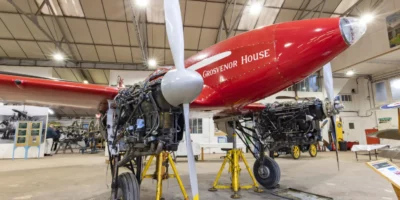It’s a fact that the slightly heavier light aeroplanes we know and love haven’t been made for a while. Most of them were built in the 1960s and 1970s, as were the American engines usually found in their noses. That the airframes and systems have survived and functioned so well for so long (especially in a certified environment) is part testament to a continuing ready supply of spare parts, many of which are generic, like filters, pulleys, pumps, rod-ends, brakes, generators, starters and the like. Airframes were also hand-built in relatively small numbers so the original build process is generally easier to replicate when it comes to repairs. Steel tubes can always be welded, sheets of aluminium riveted, and wood glued and covered with fabric.
“An oft-overlooked detail about spark plugs is that they have a finite life, whether you use them or not”
Engines are obviously not so simple but the two major American manufacturers are still in business – and thanks to enlightenment in the US – the FAA’s Parts Manufacturing Authority has allowed much to be replicated without prior permission (think Superior). Almost everything is available here within days, albeit at a price. That’s for American engines, which were made in large quantities (Lycoming were making 700 engines per month in the 1960s) so it’s worth making parts for them, but it’s not the case for old British engines like Gipsy and Cirrus whose manufacturers are long gone. In the 1930s and up to WWII, de Havilland built some 14,000 Gipsy Majors and Blackburn around 700 Blackburn Cirruses, a tiny number in total compared with Lycoming and Continental’s output, which also began in the 1930s but continues today. Fortunately, for Miles owners like me and Stu Blanchard, there are so few Blackburns actually in service, the supply of bigger bits (like cylinders) is enough to be going on with. That’s not true of Gipsies because there are a fair few still powering Chipmunks and Tiger Moths. All of which brings me to spark plugs… You know, those fit and forget items that only need cleaning once a year come annual time.
An oft-overlooked detail about spark plugs is that they have a finite life, whether you use them or not. Most, if not all, the plugs that you find in boxes of spares feature a mica insulator and that degrades all on its own until it loses the capacity to insulate. Since most of them were made in the 1940s and 1950s, you can sift through a fair few until you find a set which has survived and you won’t know until you get them properly hot. That’s true of all plugs, but the 18mm variety fitted to American engines are still readily available from the usual sources at about £30 each, which is bad enough. The 14mm plug favoured by the British makers is also available… at £52 a go. My schoolboy maths says that’s £500 quid a set. Then, the screw-on collars for the ignition harness won’t fit. Those too are available from a regular source, at just under £2,000… It would be the ‘right way’ to do it, but rather than be led by the nose into penury, I decided to do what many others have already done, and fit a set of car plugs which are available at £1.39 each. Easy if I say it fast enough, but as it turned out, rather more difficult to accomplish.
I’ve read as much of the ‘I wouldn’t use one of those in my aircraft/car/boat/lawnmower’ stuff as I can be bothered with, but while an aviation plug is undoubtedly robust, I note that hundreds of thousands of car plugs last for tens of thousands of miles at high revs, fed by a high energy ignition system and at compression ratios of 12:1, so I’m not expecting immediate meltdown in the face of 2,000rpm and 5:1. Simply screwing one in though is the easy part, the much bigger problem is the aforementioned connection between magneto and plug top. The Blackburn/BTH/Plessey harness fitted to my Messenger is predictably heavy duty, with a coiled aluminium tube screwed by collars and glands to a screened box on the back of the magneto, all intended to shield the radios from the RF interference generated by the ignition system, a task that was much easier in the 1950s when we only had 360 channel spacing, let alone 8.33. I tested the car plug concept using a set of carbon leads and resistor caps intended for a VW Golf, sourced from the internet for £11. Starting was instant (great), misfire gone (even better), radio nigh on unusable (less good). Fixing the latter has since occupied a great deal of head scratching, more surfing of the internet than is good for me and several attempts – I think I’m now on the Mk4 version. Key to it was the discovery of a set of plug caps intended for a dirt bike which feature a metal shroud that slides down to the metal plug body. Some are made in China, some in Germany and some are better than others, but all have a resistor which I didn’t want, but would have to accept. I chopped up several sets of old harnesses, sheathed all the gaps with copper braided insulation and tacked it all with shrink wrap.
The Blackburn now starts easily and runs well, but… when I did eventually get to fly, I found the radio interference hadn’t completely gone. Much better, but not eliminated, and it is worse on frequencies with a lower number, something I’ve noticed before, and which makes me think it’s not entirely a Blackburn problem. Before I start on the Mk4B, or even the Mk5, I suppose I’d better investigate the P-leads, and the dynamo and regulator. Virus-restrictions permitting, hopefully I might be able to let you know around September…
Vintage aircraft and cars make Mark particularly happy.
[email protected]







